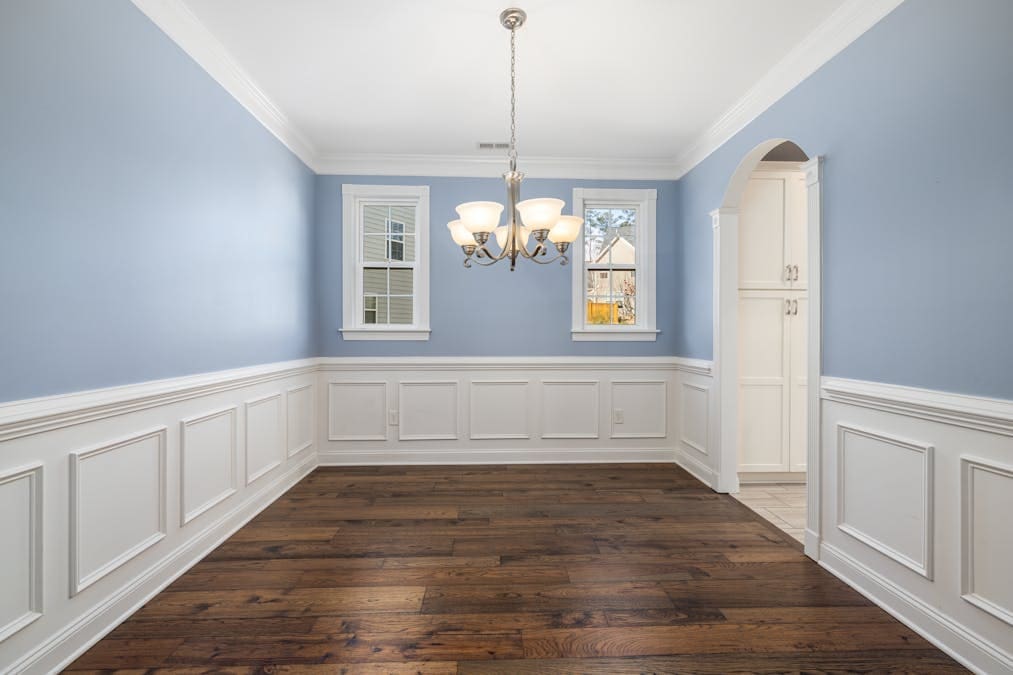How Often Should You Repaint Interior Walls in a Home

Is It Time for a Refresh?
Are your walls starting to feel a little tired, dingy, or outdated? It’s a question many homeowners ask — and one that doesn’t always come with a simple answer. If you’re wondering how often you should repaint interior walls in a home, the answer depends on a few key factors.
Beyond just keeping things looking fresh, interior painting plays a critical role in maintaining your home’s value and livability. From busy hallways to low-traffic guest rooms, each space has its own ideal repaint frequency based on how it’s used, how it’s maintained, and even how much sunlight it receives.
In this post, we’ll explore:
- Typical interior paint timelines by room type
- Signs it’s time for a repaint
- What factors impact paint longevity
- Why professional painting leads to better-looking, longer-lasting results
Let’s take a closer look at how often you should repaint — and what factors make the biggest difference.
Average Repaint Frequency by Room Type
Not all walls age equally. The timeline for repainting interior spaces depends heavily on how often each room is used and the conditions it’s exposed to. Some areas take a daily beating, while others stay untouched for years. Here’s a breakdown of typical repaint frequency recommendations by room type.
High-Traffic Spaces
Entryways, hallways, kitchens, and bathrooms see the most wear and tear in the average home. These are the spaces where scuffs, moisture, and regular cleaning take a toll.
- Paint in these areas typically lasts 3–4 years
- Kitchens and bathrooms face extra stress from grease, steam, and moisture
- Hallways and entryways are prone to scratches, marks, and bumps from bags or furniture
If your high-traffic areas are starting to look dull or stained, it’s likely time for a refresh.
Living Rooms and Dining Areas
These shared spaces usually see moderate activity and less moisture exposure than kitchens or bathrooms. They tend to hold their colour and finish longer, but lifestyle plays a role here, too.
- A well-maintained living room may only need repainting every 5–7 years
- Homes with kids, pets, or lots of entertaining may require more frequent touch-ups
- Natural light exposure can cause fading over time, especially near large windows
Bedrooms
Bedrooms, particularly adult bedrooms, are typically lower-traffic spaces that don’t need frequent repainting.
- Most can go 7–10 years before needing a new coat.
- Children’s bedrooms, however, see more wall contact (and creativity) and may need repainting every 3–5 years.
Home Offices and Guest Rooms
Used less often and typically with minimal activity, these rooms tend to hold up the longest.
- With light use and proper application, walls can last 5–7 years or more
- That said, repainting may be prompted more by changing décor or style than wear and tear
Signs It’s Time to Repaint Your Interior Walls
Even if you’re not tracking the years since your last paint job, your walls might already be telling you it’s time. From wear and tear to changes in taste, here are some clear signs that a refresh is in order — no calendar required.
Physical Wear and Tear
Daily life leaves its mark, especially in high-traffic areas or busy family homes. Some wear is expected, but if it becomes visible, it’s time to repaint.
Watch for:
- Cracks, scuffs, and scratches from furniture, pets, or cleaning tools
- Peeling or flaking paint, particularly in older homes or poorly prepped surfaces
- Damaged baseboards and trim that make the whole room feel tired
These issues not only look rough — they can expose your walls to deeper wear over time.
Fading and Discoloration
Paint doesn’t last forever, even if it was applied well. Sunlight, air quality, and time all affect the look and tone of your walls.
Common signs include:
- Faded colours, especially near windows or in sunlit rooms
- Yellowing or staining, often caused by smoke, moisture, or cooking residue
- Uneven colour patches from spot cleaning or wall hangings
If your walls no longer match the original colour — or your memories of it — it’s probably time for a fresh coat.
You’re Just Ready for a Change
Sometimes, you don’t need a reason beyond “I’m over it.” Whether you’ve bought new furniture, updated flooring, or just want a different vibe, repainting can completely transform a space.
- A new colour can bring light into a dark room or calm into a busy one
- If you’re preparing to sell, fresh paint is one of the easiest ways to boost perceived value
- Even a neutral refresh can modernize your home and make it feel brand new
When the style no longer suits your space, repainting is one of the quickest, most impactful updates you can make.
Factors That Influence Interior Paint Longevity
Not all paint jobs are created equal, and neither are the conditions they face. Even in rooms with similar use, factors like product quality, prep work, and environment can affect how long your paint holds up. Understanding these variables helps you plan your interior paint timeline more effectively.
Paint Quality and Finish
The quality of your paint has a direct impact on how long it lasts — and how good it looks over time.
- Premium paints offer better coverage, longer wear, and improved washability
- Paint finishes matter, too:
- Flat/matte finishes hide imperfections but mark easily
- Eggshell and satin are ideal for moderate-traffic areas
- Semi-gloss or gloss holds up well in high-traffic or moisture-prone spaces
Choosing the right combination of finish and quality ensures your walls can stand up to everyday life.
Surface Prep and Application
You can buy the best paint on the market, but if it’s applied to a poorly prepared surface, it won’t last.
Professionals know that lasting results depend on:
- Proper wall prep, including cleaning, sanding, and patching imperfections
- Using the right primer, especially over dark colours or repairs
- Applying even coats with the correct tools and drying time
When paint is applied correctly, it adheres better and holds up longer without peeling, chipping, or streaking.
Room Usage and Environment
Even the most well-painted room can wear out faster under the wrong conditions.
- Busy households, especially with pets or kids, lead to more frequent contact with walls.
- Smoking, indoor fireplaces, and cooking can leave residue that discolors paint.
- Bathrooms, laundry rooms, and kitchens face humidity and moisture, requiring mildew-resistant paint.
Factoring in how each room is actually used helps set a realistic repaint frequency and guides product selection.
Why Hiring a Pro Is Worth It in the Long Run
Repainting might seem like a straightforward job, but there’s a lot more that goes into a lasting, flawless finish than most people realize. When you work with a professional, you’re not just paying for a paint job — you’re investing in a higher standard of preparation, product selection, and precision.
It’s Not Just About Colour — It’s About Longevity
A professional painter brings more than a brush to the job. They bring knowledge of:
- What paint products work best for your room type, lighting, and wall texture
- How to apply the right finish to extend durability
- When to repaint specific spaces based on their wear patterns and usage
This means fewer touch-ups, better overall results, and more time between repainting cycles.
Professionals Customize Your Interior Paint Timeline
One of the biggest benefits of hiring a pro? You don’t have to guess. A professional painter can:
- Assess your home’s specific needs
- Recommend an interior paint timeline based on how your family uses each room
- Suggest products that balance longevity, washability, and style
Instead of repainting more often than necessary (or waiting too long), you’ll get expert guidance tailored to your space.
Flawless Results Without the Hassle
Painting may look simple — until you try to cut in around trim, avoid roller marks, or deal with unexpected wall damage.
Professionals deliver:
- Even finishes, clean lines, and complete coverage
- A smoother process from prep to cleanup
- Results that boost your home’s comfort and visual appeal for years to come
It’s not just about making your walls look good now — it’s about helping them stay that way longer.
Conclusion – Refresh, Repaint, Repeat (When It’s Time)
So, how often should you repaint interior walls in a home? It depends — but there are clear guidelines. High-traffic areas like kitchens and hallways need more frequent attention, while bedrooms and guest spaces may go years without a touch-up.
Ultimately, your repaint frequency depends on the room’s use, paint quality, and how well the space is maintained. And while timelines are helpful, nothing beats a professional assessment tailored to your home’s unique needs.
Whether your walls are showing visible wear or you’re simply ready for a fresh start, working with a professional ensures you get results that look great and last longer.
Ready for a Refresh? Let’s Talk Interior Painting
If your walls are due for a refresh, book a consultation with our team and we’ll help you plan the perfect repaint timeline for your home — from product selection to final brushstroke.


